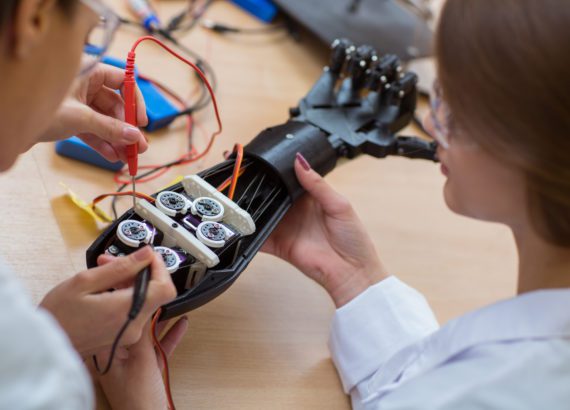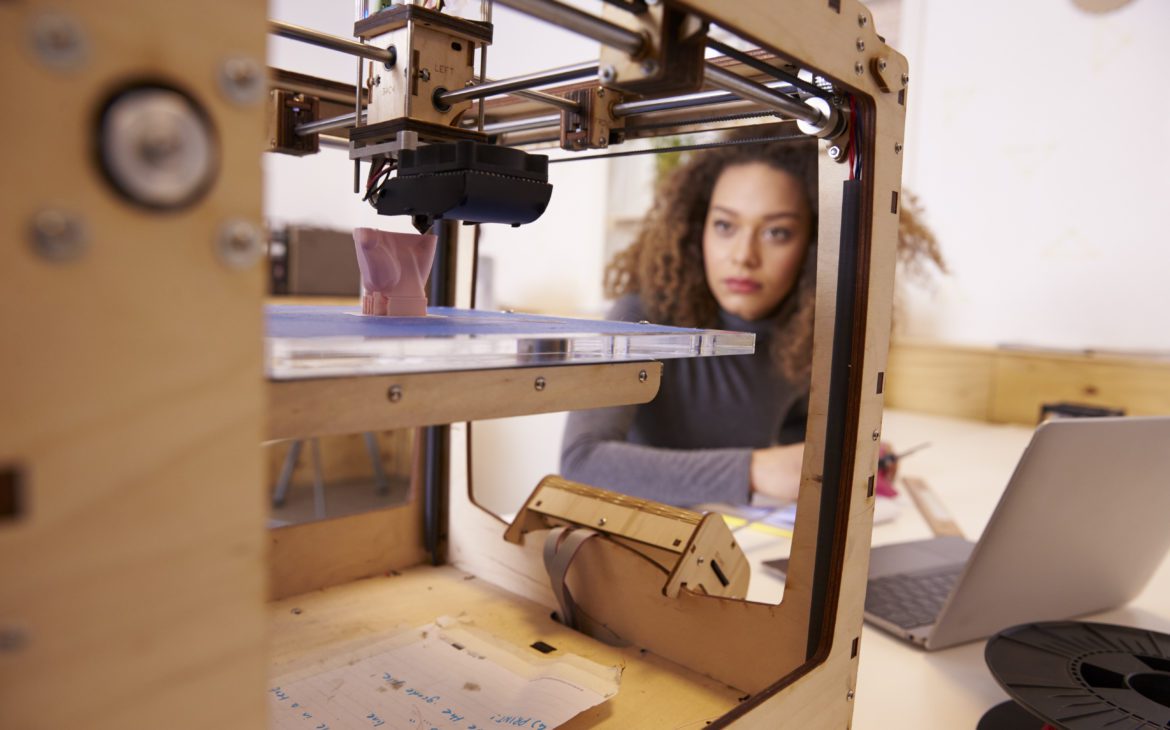When we were kids, our vision of the future probably came from cheesy sci-fi movies or The Jetsons: flying cars, food pills, even automated machines that make anything we need at home—seemingly out of thin air. Today, while we may not quite be ready to strap on jetpacks or vacation on the moon (yet), that “anything machine” is no longer science fiction.
It’s called a 3D printer.
You’ve likely heard of 3D printing—a technology various industries have used for years. Still, you might be a little unclear about how it works. What you may not know is that a growing number of U.S. households already have 3D printers. In 2018 alone, over 590,000 3D printers were sold for consumer use. Experts predict that they may become as ordinary and necessary as WiFi and smartphones in the not-too-distant future.
Surprised? You’re not alone. So, let’s start with some background.

Is it even “printing?”
Technically, 3D printers don’t print at all. But seeing one in action reminds people of how those old inkjet printers used to work.
A 3D printer uses a computer scan or design file of an object to build a 3D model. The printer then deposits some type of building material (molten plastic, metallic powder, carbon fiber compounds, or even concrete), layer by layer, and constructs the object from the ground up. Think of it like a tube of toothpaste, laying down long strips, one on top of the other.
So many uses for 3D printing.
Most often, 3D printing is used to create prototypes and prove ideas before full-size products are made. More and more, though, companies use the technology to manufacture full-size goods and parts. In a 2019 survey, more than three-quarters of manufacturers said they expect their use of 3D printing technology to double by 2025.
Industries, as varied as medicine and aerospace, have now embraced 3D printing right alongside engineers and automakers. A radiologist, for example, might create an exact model of a patient’s heart to help a surgeon prepare for a complicated operation. In defense, spare parts can be made on-demand, avoiding supply chain delays and costs. The same logic was behind the decision to put a 3D printer on the International Space Station. If something breaks up there, it’s much easier to print a replacement than wait six months for a supply mission.
Recently, researchers in Saudi Arabia even used a new 3D printing method to create an ultra-efficient type of optical fiber—similar to the filaments used for super-fast internet service like Quantum Fiber.
3D printers are coming home.
Although there are still very few 3D printers in American homes, they are more affordable than ever. A consumer model can run from $4,000 on the upper end to as little as $275. In addition, most consumer-grade printers require no specialized training. There are numerous online design templates available for different printing projects. You might need to learn 3D modeling software for more sophisticated work, but essentially, anyone can purchase a 3D printer and start using it right away.
The question remains, however, once you own a 3D printer, what can you do with it?
Save time, money, and headaches.
Things break all the time. Imagine a decorative drawer pull in your kitchen snaps off. Instead of ordering a new one and waiting weeks for it to arrive from the manufacturer—print a new one in a few hours. Problem solved.
Often, just one small part must be replaced, and it’s not easy to locate at the hardware store or online. Manufacturing your own custom spare parts saves labor charges, time spent waiting on a back-order list, or the hassle of ordering the wrong thing on the internet. Best of all, everything from the lawnmower to Grandma’s antique clock will stay running.
Play to your creativity and practicality.
From home décor to one-of-a-kind craft items, people are printing everything they can imagine. Examples include personalized planter boxes, homemade sunglasses, and cases for smartphones and earbuds. Gift-giving can also take on a new dimension. You can print a personalized gift for a difficult-to-shop-for person—and have it today instead of paying more for two-day shipping.

Monetize your hobbies.
Why stop at just making things for personal use? People with artistic and design talent are turning their 3D printing hobby into their side hustle. The unique selling point is being able to make items customized to a single client. When you only need one, 3D printing is the perfect manufacturing solution.
Career impact.
Understanding how 3D printing works and doing it well are already in-demand, marketable job skills. Learning the software and processes can help a resume stand out. Kids in homes with 3D printers will have an advantage in their education and become comfortable with the technology long before they start on their career path.
Where to next?
Texas-based company ICON made headlines in March when it put its first 3D-printed homes on the market. Using a mammoth 3D printer layering concrete, the company is producing 2,000 square foot houses that they claim are more resistant to hurricanes and severe weather. ICON has also worked to provide smaller, low-cost housing around the globe to end homelessness. With lower material costs and shorter construction times (the Austin homes went up in two days), 3D-printed homes might even solve our national housing shortage.
ICON has also contracted with NASA to build 3D-printed living structures made from lunar soil for a settlement—wait for it—on the moon.
Maybe we are closer to that sci-fi movie future than we thought.








